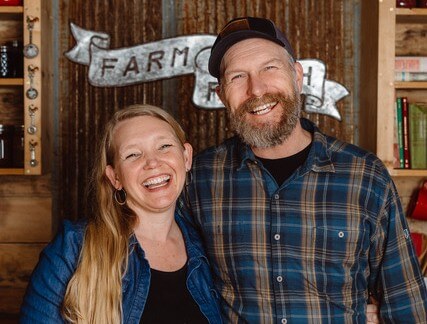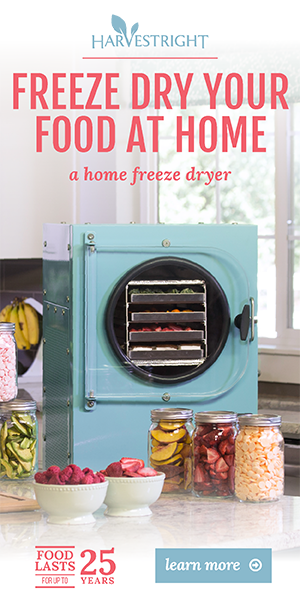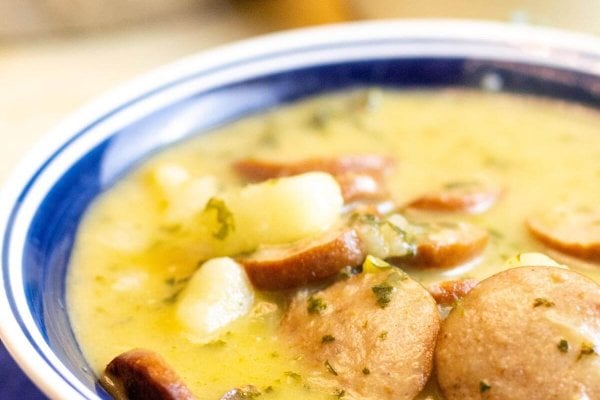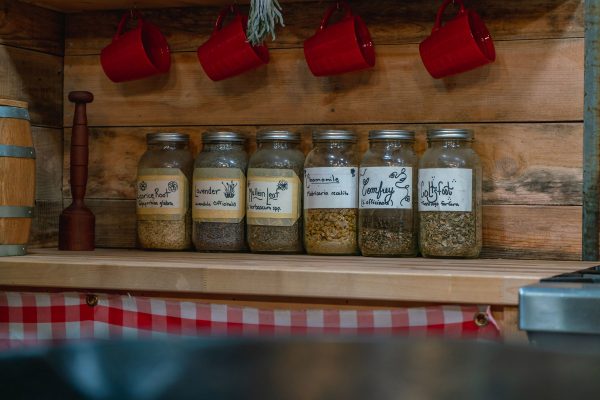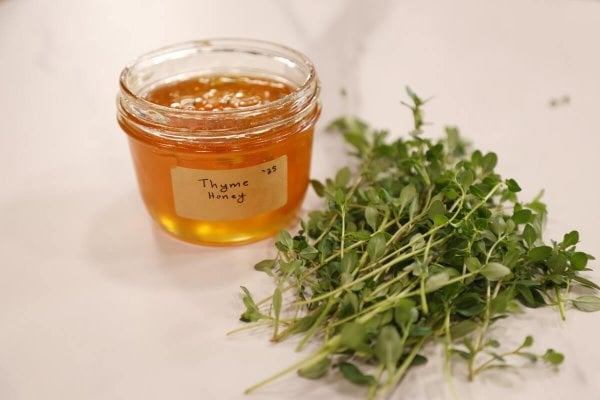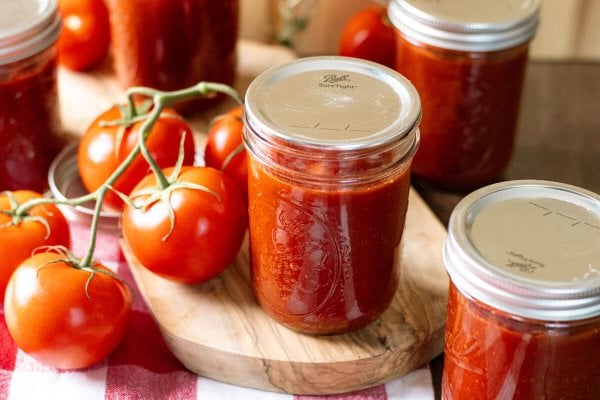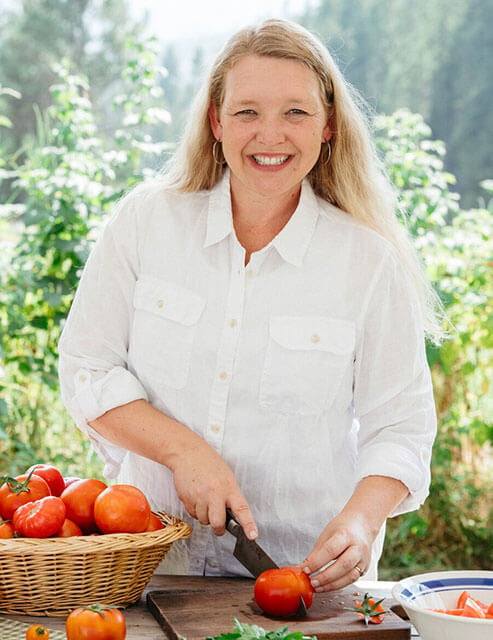Use this guide to find the best chicken waterer for your homestead. We cover all the features like automatic, nipple, cup, heat, hanging, etc. Get your chickens set up with the perfect system the first time, and save yourself the frustration of trial and error.

Table of Contents
ToggleThe Importance of the Right Chicken Waterer
We keep egg-laying chickens and raise chickens for meat, so we constantly research and test different methods, such as feeding chickens, fermenting chicken feed, implementing the deep litter method, researching chicken tractors, and testing chicken coops.
There is a world of information out there, and if you aren’t yet experienced with chickens, all the options can feel overwhelming. If that feels relatable, we encourage you to begin by focusing on your chickens’ basic needs.
Water is essential for all life, and choosing the best chicken waterer at the onset of your chicken journey can save you a lot of time, frustration, and expense. A quick Google search provides endless options to sift through and can shake your confidence.
This guide is designed to help you save time and confidently determine what will work best for your homestead. If you’re all about saving time, check out these other guides we have created to help you choose other homesteading tools and supplies:
- Best Pressure Canner for the Homestead
- Choosing the Best Grainmill for Your Homestead
- Best Food Dehydrators: Find the Right One for Your Homestead
- What Is the Best Harvest Right Freeze Dryer For You?
- Benefits of Cast Iron (+Choosing the Best, New or Used)
- Preservation Tools on a Budget
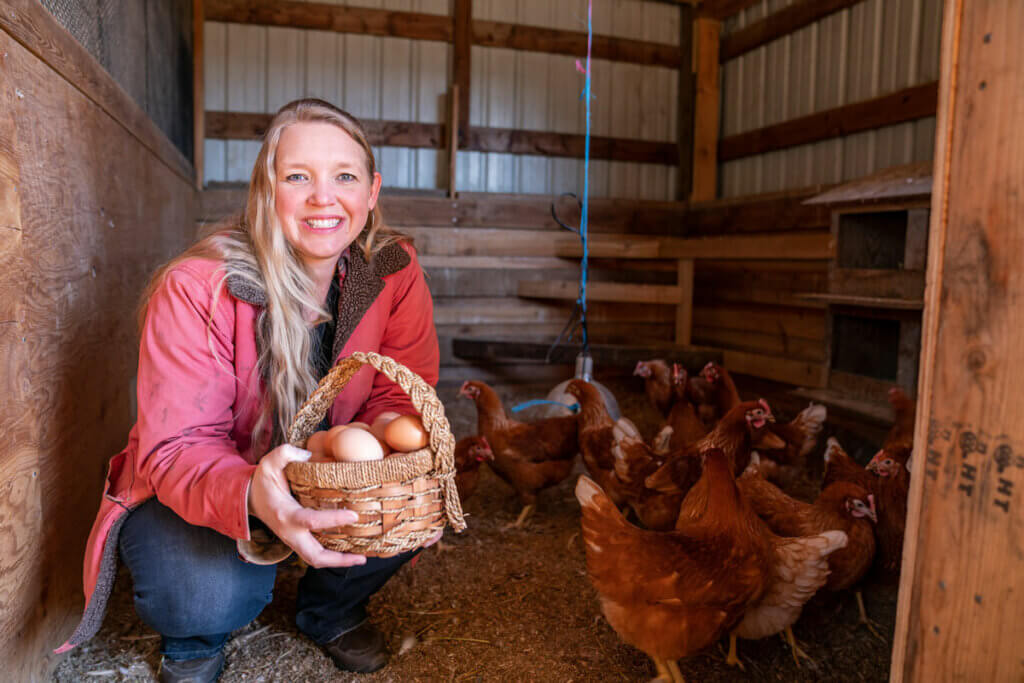
What to Consider in a Chicken Waterer
When choosing the best chicken waterer, you should consider your needs and the needs of your chickens. As the caretaker, it’s important that watering systems are easy to clean, fill and maintain
It is equally important to understand how vital water is for your chickens’ health. They are more sensitive than humans and become dehydrated much quicker, so having a steady supply of clean water available is critical.
Size Capacity
A full-grown hen will drink approximately one pint of water per day, so depending on your flock size, you may need to provide several gallons of fresh water. Make sure the capacity and/or quantity of waterers can accommodate your chickens’ needs without having to refill water multiple times a day.
Additionally, consider your long-term goals. If you plan to expand your flock, it might make sense to purchase a larger waterer than initially needed.
Materials
Chicken waterers are available in galvanized metal and plastic versions. Galvanized metals are initially more expensive, but they will outlast the plastic options. However, plastic models are easier to clean, making them more convenient.
Height
Chickens love to scratch, so if your waterer is placed too low, they will contaminate their water supply with debris. Once the water is dirty, they will avoid it, so even if it’s available, they won’t drink it.
On the other hand, be careful not to place the waterer too high, making it inaccessible. It’s ideal to place the waterer at the height of the chicken’s neck. If you don’t have something to place your waterer on, hanging waterers can provide a solution and save space at the same time.
It’s also worth mentioning that a baby chick should not have access to waterers designed for full-grown chickens. This poses a safety hazard where the chick may fall in and drown. For chicks, purchase chick waterers specifically designed to accommodate their size.
Design
There are a few features that can make all the difference in your experience.
- Cup Waterer – The cup design mimics the natural way chickens drink water making it easier to provide the amount of water they need. However, cups are harder to keep clean and take up more space.
- Nipple Waterer – The more protected water source of the nipple system provides access to fresh water for longer periods of time. However, some chickens don’t like nipple waterers and end up not getting enough water. This has not been the case for us, but it’s worth cautioning so you know to watch for this.
Heating
If you live in an area with cold temperatures, you might consider a heated chicken waterer to keep your chicken’s water from freezing.
Heated water options come as an all-in-one unit or a heater base that you can place your chicken waterer on. You will need access to electricity to plug the power cord in, but if that’s not an option, these units can usually be hooked up to a solar panel.
Choosing a Chicken Waterer for Your Homestead
After considering your needs and the needs of your chickens, you are now ready to make your choice.

Horizontal Drip Catch Nipples
5-gallon buckets top our list of must-have homestead essentials for good reason. They are so versatile, and one excellent use is to convert them into chicken waterers using horizontal drip catch nipples.
Some nipple waterers can create a mess because they drip water wherever they’re set up. These nipples, on the other hand, are made with a drip-catch design to keep the area clean.
The side-facing nipple ensures water stays fresh and clean, and as a bonus, they are suitable as an all-around poultry waterer for chickens, ducks, turkeys, and more.
However, horizontal nipples require a firmer peck to activate than vertical nipples. Therefore, they’re best used for older flock members rather than young chicks.
Average Customer Review Rating: ⭐⭐⭐⭐⭐ 4.4 Stars (Out of 628 Reviews)
“I used these on multiple types of covered containers – they’re awesome! The chickens converted to them with no issues, there is absolutely no waste, no leaking, no more dirty water, and they have no problems getting what they need!” – Amazon customer review.
Specifications
- Price: $10.95/12pk. (Bucket Sold Separately)
- Dimensions: 1.25″W, 1.25″H, 1.25″ depth
- Capacity: Depends on the bucket size
- Number of birds: 5 Birds per nipple
- Chicks: No
- Full-Grown Birds: Yes
- Waterfowl: Yes
- Hanging: No
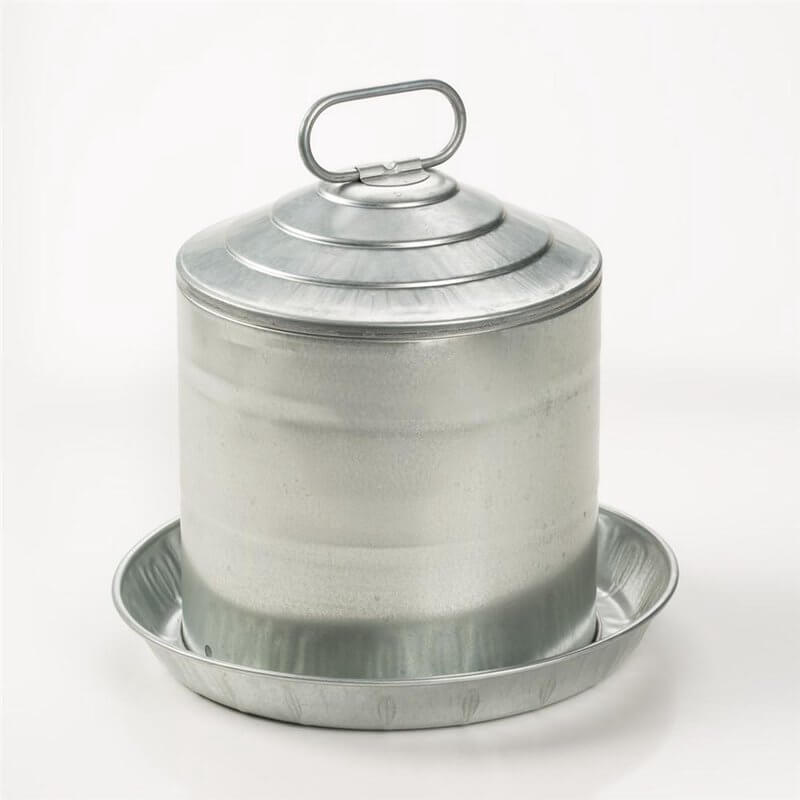
Classic Galvanized
If you value sourcing products made in the USA, this classic galvanized waterer is a good choice. This design has been a proven performer on poultry farms for years.
Its quality double-wall design is made from galvanized steel, meant to last. The built-in handle can also be used to hang your waterer as needed.
Average Customer Review Rating: ⭐⭐⭐⭐⭐ 4.5 Stars (out of 2 reviews)
“Easy to fill and carry.” Lehman’s customer review.
Specifications
- Price: $39.99
- Dimensions: About 12″H, base 12″OD
- Capacity: 2 Gallons
- Number of birds: 24
- Chicks: No
- Full-Grown Birds: Yes
- Waterfowl: Yes
- Hanging: Yes
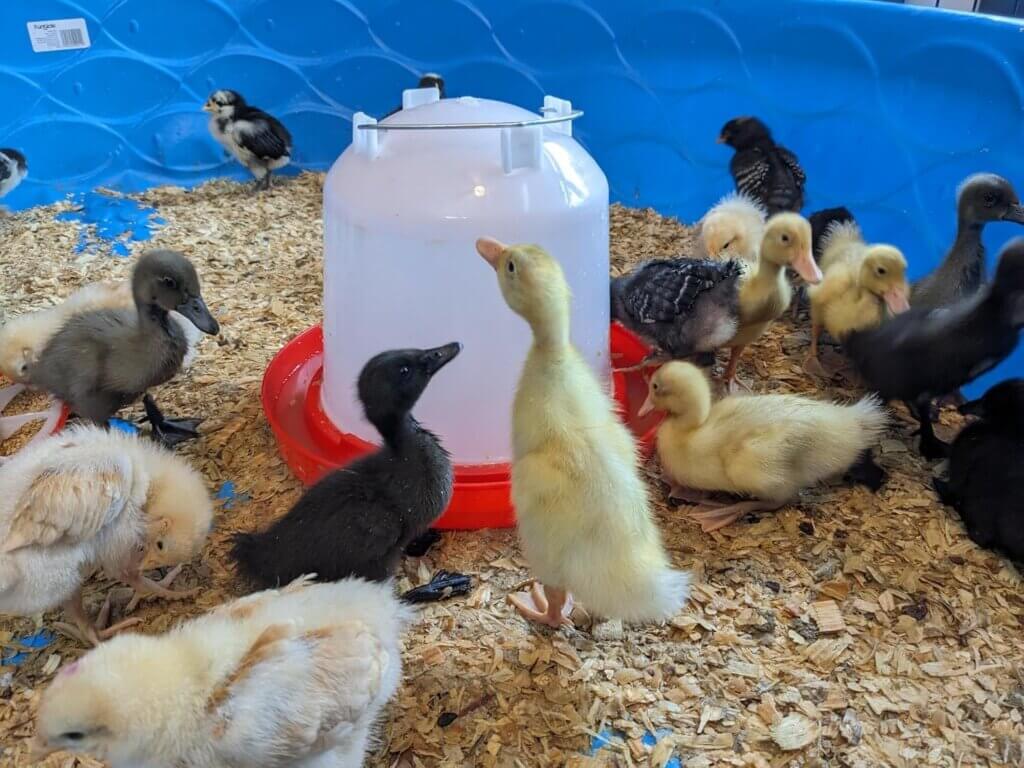
Basic Plastic
As mentioned before, plastic waterers are easy to clean and initially more affordable.
Because they are made from plastic, they will not rust, and the design of this plastic waterer does not have seams, so it will not leak. A metal handle allows you to carry the entire unit, even when it’s full of water.
This 1.5-gallon waterer works well for other poultry and provides for your flock throughout all stages of their life, so you don’t have to purchase a separate waterer for baby chicks.
Average Customer Review Rating: ⭐⭐⭐⭐⭐ 4.1 Stars (out of 142 reviews)
“Very simple, two pieces that twist-lock the tank to the base. So just twist off the tank to refill and replace the base while the tank is upside down. The hanging handle is great to suspend the whole thing off the ground to help keep it clean. Plastic but it does the job!.” Amazon customer review.
Specifications
- Price: $18.99
- Dimensions: 12″L x 12″W x 8″H
- Capacity: 1.5 Gallons
- Number of birds: 18
- Chicks: Yes
- Full-Grown Birds: Yes
- Waterfowl: Yes
- Hanging: Yes
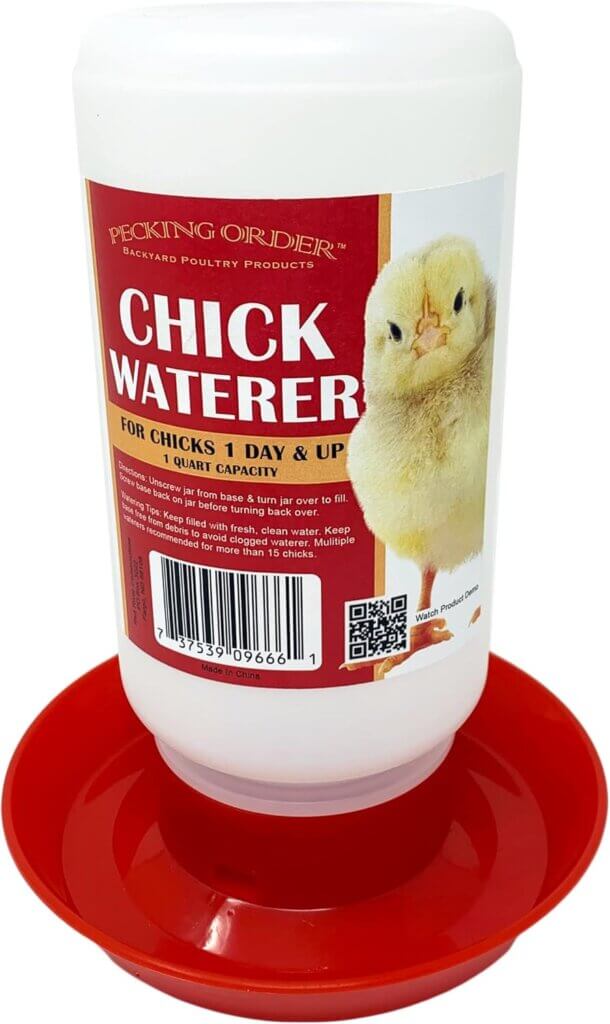
Baby Chicks
Not all waterers are suitable for baby chicks’ accessibility and safety needs. This affordable and specially designed waterer is easy to use for chicks, quail and other small poultry breeds.
The base features a narrow trough to prevent chicks from submerging their heads and drowning, and the jar features ridges on the bottom to increase stability when filling.
Average Customer Review Rating: ⭐⭐⭐⭐⭐ 4.1 Stars (out of 47 reviews)
“I had bought a kit for my chicks, and I couldn’t use the waterer that came with it, so I bought this one from Amazon, and it worked awesome!!” – Amazon customer review.
Specifications
- Price: $8.98
- Dimensions: 8.39 x 5.94 x 5.79 inches
- Capacity: One Quart
- Number of birds: 15 chicks or 40 quail
- Chicks: Yes
- Full-Grown Birds: No
- Waterfowl: No
- Hanging: No
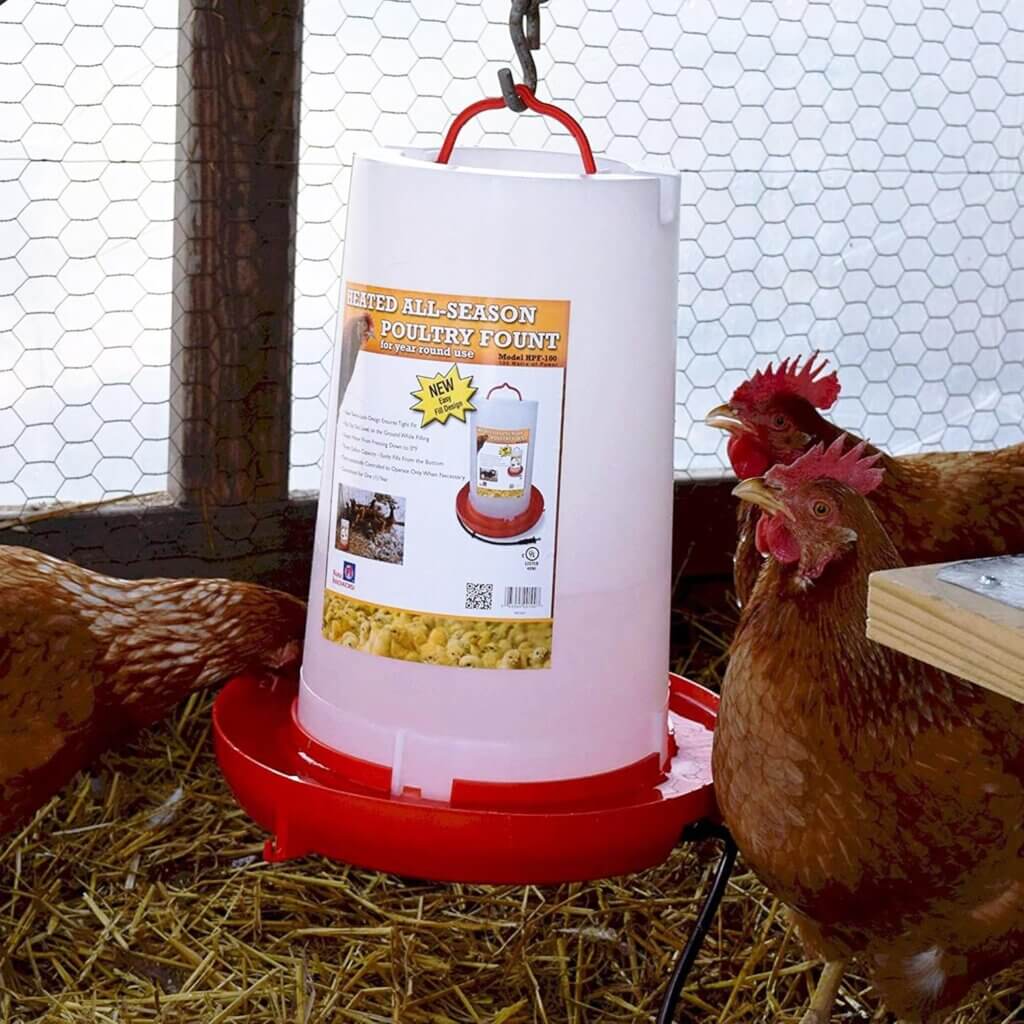
Heated Waterer
Chickens will drink more water in the winter due to the dryness of the air. If you live in a region where your animal’s water is prone to freezing, this heated waterer can save a lot of headaches.
The Heated Poultry Fountain is thermostatically controlled to operate and heat only when necessary, so you can use it year-round.
When in operation, it uses only 100 watts of power, enabling it to keep water from freezing down to 0°F. As a bonus, it can be filled from the bottom without having to remove the top.
Average Customer Review Rating: ⭐⭐⭐⭐⭐ 4.1 Stars (out of 6,138 reviews)
“Love this waterer! I have been using it all winter, and it’s worked great. I am in a state where it occasionally gets below 0 degrees Fahrenheit, and I STILL have not seen it totally frozen over. Under 0°F, it will form a thin layer of ice on top, but nothing beyond that. The chickens peck right through and drink with no issues.” Amazon customer review.
Specifications
- Price: $52.94
- Dimensions: 13.5″L x 13.5″W x 20″H
- Capacity: 3 Gallons
- Number of birds: 35
- Chicks: No
- Full-Grown Birds: Yes
- Waterfowl: Yes
- Hanging: Yes
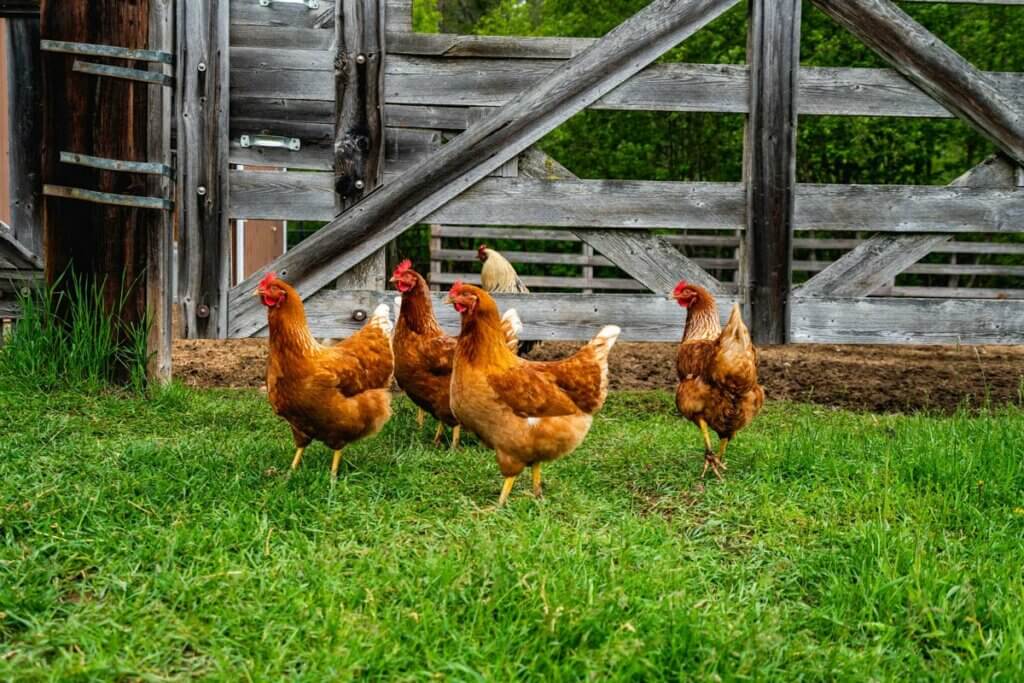
FAQ
The best chicken waterer depends on your flock’s size and needs. This guide will help you determine what to consider when selecting a chicken waterer.
Metal waterers last longer but are harder to clean. Plastic ones are cheaper and easier to clean but might not last as long.
Depending on age, size, and weather conditions, chickens can only survive 24-48 hours without water, so it’s key to always have a reliable water source.
The height of the waterer depends on the chicken’s size and age. It should be easy for them to reach without straining. Aim for a height where the rim is at your chickens’ shoulder level.
It’s best to use clean, fresh water. Avoid unnecessary additives. Some add apple cider vinegar or electrolytes but use them sparingly and with caution.
Winter care for your waterer is crucial. Use heated waterers or add heating elements to prevent freezing. Insulate, check water levels, clean regularly, and have backup sources like buckets or troughs.
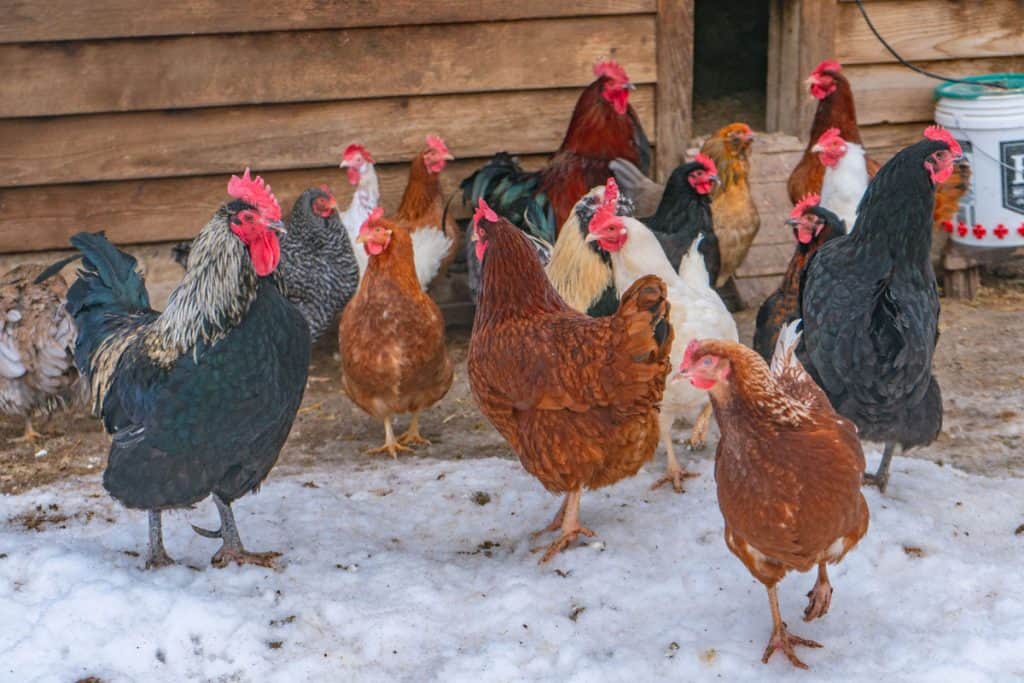
Other Posts You May Enjoy
- Best Pressure Canner for the Homestead
- Choosing the Best Grainmil for Your Homestead
- Best Food Dehydrators: Find the Right One for Your Homestead
- What Is the Best Harvest Right Freeze Dryer For You?
- Chicken Tractor Basics & What to Consider When Buying One
- Benefits of Cast Iron (+Choosing the Best, New or Used)
- Preservation Tools on a Budget

